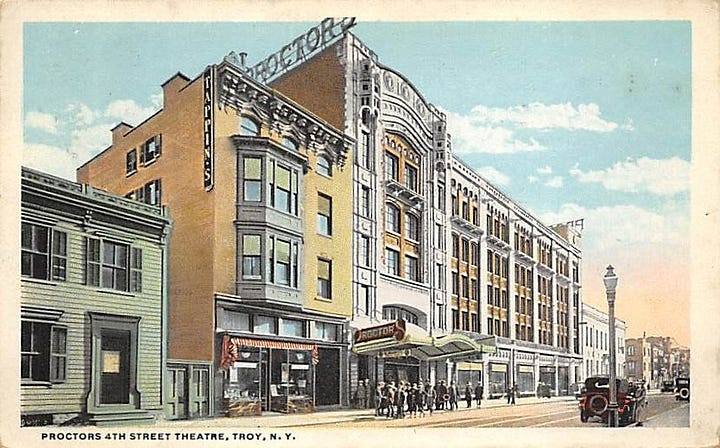The Art of Remote Real Estate: Building a Team That Delivers
It is cliché to have to write it in black and white, but building the right team to execute a real estate development project is probably 90% of what will determine your success or failure. Three months into our project, and we have a great initial roster. As I shared in "The Architect, A Code Compliance Sherpa," we have been on this team-building journey before we even owned the building.
Since our project is starting to transition from paperwork and design to demolition and construction, it seemed like a good time to take a break and take account.
Once you own the property, there are four basic categories of vendors that you will need support from: planning, operating, building, and maintenance. Here is our first round of recruits for the team:
The Architect - Your guide to “the promised land,” otherwise known as project completion. The architect is the team coach; he’s a big part of the game, but he’s rarely on the field. As the coach, he is making sure that all the plays are drawn and ordered. In these early days, we need help defining the many different paths along which we can bring the project to completion and which of those paths align with our goals and budget. The most critical dynamic you need to select for is attention to detail. As you explore project possibilities and build your vision, reality will hand you at least a few surprises you never planned for. Attention to detail will save you from many mistakes. For those that happen anyway, having the flexibility to adapt to changes when project conditions change is another attribute that makes for a good architect partner. That said, be careful that you never mistake the architect’s role. In the end, architects are not investment advisors or operating managers; they are there to create building instructions for the rest of your vendors.
Electrical Engineer - When making significant changes to a property’s utilities, you may need to ask your local provider to change the amount of service available to your property or you may need to change the number of meters on the property. When you make a service request to your utility, you will need to provide documentation, the kind only an engineer can create. This documentation needs to show how and why the engineer reached the conclusions that they did; it is analyzed by the utility provider to justify the service request.
Construction Electrician - This is the vendor that runs the wires and makes things go beep-boop-beep. These vendors tend to have organized crews, dedicated vehicles, and large-scale equipment. At this early stage of the process, we need someone to help take the electrical engineer’s instructions and install the new electrical service the project requires.
Construction electricians can scale up their service on your project, bring more hands to bear, and get the job done faster. In this case, the value calculation compares the time delays (e.g., rent revenue losses) of a smaller crew with the cost of their contract. More often than not, you will lose more on rent than you will save with a small vendor.
Maintenance Electrician - This is the vendor you call when the beep-boop-beep suddenly stops. To keep costs down, the ideal candidate for this vendor category is a sole proprietor. Bigger companies are more efficient at big jobs, and small companies are more efficient at small jobs. On this project, we found an electrician with a day job that does small jobs on the side. Since this property still has tenants living on site with electric heating, in a northeast winter, having an electrician on call becomes paramount. Old and neglected buildings face constant breakdowns.
Stair Fabricator - In most places, changing the number of apartments in a building triggers a significant code review. At the scale of our project, one could think of what we are doing as building a brand-new building inside an old building shell. At this scale, you can “grandfather in” very few code variances. That means that on our project, a building that has no external fire escape will need to have one added. If you are a hardware store rat like me, you will know that there are no fire escapes or fire escape parts sold at Home Depot or Lowe’s. This is something that is designed by the architect, sent to an off-site fabricator, and delivered to the site in large pieces to be assembled.
Property Manager - While there is little to manage, the city of Troy requires that any property within the city limits have a property manager no more than 20 miles away. Even if there are few people living on the property, there is still an obligation to keep the sidewalks clean and shovel the snow. This is a downtown urban neighborhood after all.
On this project, we found the tenant to be very responsible and highly engaged. While they will not be showing or renting apartments since they need a real estate license for that, they can take care of all the other day-to-day tasks of operating the property. On this project, we devised another win-win money-saving strategy for property management: rewarding the on-site tenant for completing tasks with credits against rent. The tenant is happy to do a little work in exchange for lower rent, and the landlord saves a bunch of money. Of course, this is less hands-off, but removing management company fees, at around 6% of gross revenue, will make it dramatically easier to reach profitability on a cash flow basis.
Maintenance Plumber - Like the maintenance electrician, having someone to call for small jobs can significantly reduce costs. Small emergencies like frozen pipes or malfunctioning boilers are bound to happen. For this project, we found a local vendor that is a one-person shop. Unlike a company with a receptionist picking up the phone, a garage full of work vans, and multiple work crews, a small shop is much more likely to give you a much more competitive price.
Sewer Main Plumber - Unlike most elements of our project, sewer mains tend to be a fairly specialized trade. Plumbers that repair and replace sewer mains tend not to do interior work. On this project, we sent a video camera down the old sewer to find it is both broken and not large enough. Replacing a sewer main that is 8 feet underground and runs 70 feet to the main will be a big job.
Window Restorer - While you will probably never need one of these craftsmen, this project is in a designated historic district and comes with an additional set of rules. This property’s windows are over 100 years old. We have photos from the 1910s, 1930s, and 1980s that show the transformation of the facade. Well-built antique windows can be restored to better-than-modern window functionality and cost significantly less than replacement windows. I recently got this wonderful email from our window restorer.
“Once I removed all the paint, I could see they are made of heavy dense wood; looks either oak or mahogany. Moreover, they are not mass-produced factory sashes (which would have been typical and expected for a building of this era) but appear hand-built with tight-fitting mortises and tenons that needed no nails to secure the sashes together - they're instead secured tight with hand-built shims. This is a nice discovery.”




The journey of assembling a top-notch real estate development team is both intricate and essential. Each vendor, from the property manager to the sewer main plumber, plays a pivotal role in turning a vision into reality. As you navigate your own projects, keep in mind that the right team can turn potential pitfalls into success stories. Whether you’re just getting started or looking to optimize your current team, don’t hesitate to connect for personalized advice and recommendations. Let’s make your real estate goals a reality together.
If you've found value in these insights and want to continue your journey of real estate wisdom, please subscribe to The Property Alchemist.
Don't let your real estate dreams remain just dreams. Empower yourself with the knowledge and insights that can turn your investment visions into concrete reality. Subscribe to The Property Alchemist today and take the first step towards becoming a Master of Real Estate alchemy. Your next successful project is just a subscription away!




